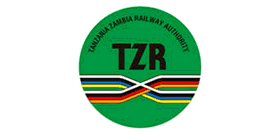 Zambia wants TAZARA corridor restored
Zambia wants TAZARA corridor restored
Zambia’s President Hakainde Hichilema has expressed a strong desire for the prompt restoration of the Tanzania-Zambia Railway Authority (TAZARA Corridor), which connects Zambia to Tanzania, to facilitate the efficient transportation of goods and petroleum products.
TAZARA, originally constructed by the Chinese government in the 1970s, faces several challenges, including outdated infrastructure and a debt burden. During Zambia’s 59th Independence celebrations, President Hichilema engaged in numerous bilateral meetings with Tanzanian President Samia Suluhu Hassan in the Zambian capital, Lusaka.
In September, it was revealed that a Chinese concessionaire is poised to assume control of the railway as early as the first quarter of 2024. President Hichilema conveyed to President Hassan that Tanzania should consider the Lobito Corridor through Angola as a complement to, rather than a competitor of, TAZARA.
This plan involves the development of the Zambia-Lobito rail line, connecting northwest Zambia to the Lobito Atlantic Railway and the port of Lobito. The Lobito Corridor is a significant transport infrastructure project supported by the United States and is anticipated to enhance regional trade and provide open-access rail connections from the Atlantic Ocean to the Indian Ocean.
Hichilema emphasized Zambia’s goal of establishing a 24-hour economy, underpinned by advanced digital technology. He proposed the transition from multiple border checks to a seamless, borderless movement of goods on both sides. President Hassan disclosed that Tanzania has allocated land for the construction of a dry port in Zambia and extended the storage time for Zambian goods at the Dar-es-Salaam Port. Zambia will be granted 20 hectares of land at the Kwala Dry Port, where consignments destined for Zambia can be stored for a longer grace period (45 days, up from 15).
Hassan underscored TAZARA’s potential to bring substantial prosperity to both nations if fully utilised. She noted that while TAZARA has the capacity to transport five million metric tonnes of cargo, in 2022, it utilized only four percent of this capacity, carrying 210,000 metric tonnes. Furthermore, TAZARA’s capacity to transport three million people annually remains underutilised, with a maximum of 564,000 passengers carried at its peak. Both governments recognise TAZARA’s significance to their economies and commit to joint efforts to address the challenges it faces, including leasing and resource mobilization for renovations, as well as the Tanzania-Zambia Mafuta (TAZAMA) pipeline.
Hassan highlighted the crucial role of the Tunduma-Nakonde border in facilitating trade between Tanzania and Zambia and stated that discussions with President Hichilema have initiated measures to address existing bottlenecks in the movement of goods and people along the border. President Hichilema expressed that a non-stop border post between Zambia and Tanzania could significantly contribute to the growth of their economies.
During their discussions, Presidents Hassan and Hichilema also addressed essential infrastructure projects linking Zambia and Tanzania, including TAZARA, Tanzania Zambia Mafuta Pipelines Limited (TAZAMA), and the Nakonde-Tunduma One-Stop Border Post. These bilateral talks resulted in the signing of Memoranda of Understanding (MoUs) covering key sectors such as trade, investment, energy, and defence.
